UNICEF Lauds Kerala Relief Camps as ‘Exemplary’: We Found out What Makes Them So!
"Today I visited this camp, this is one of the best relief camps that I have ever seen in my 20 years of professional career... This is worth documenting and sharing widely for others to learn from Kerala."
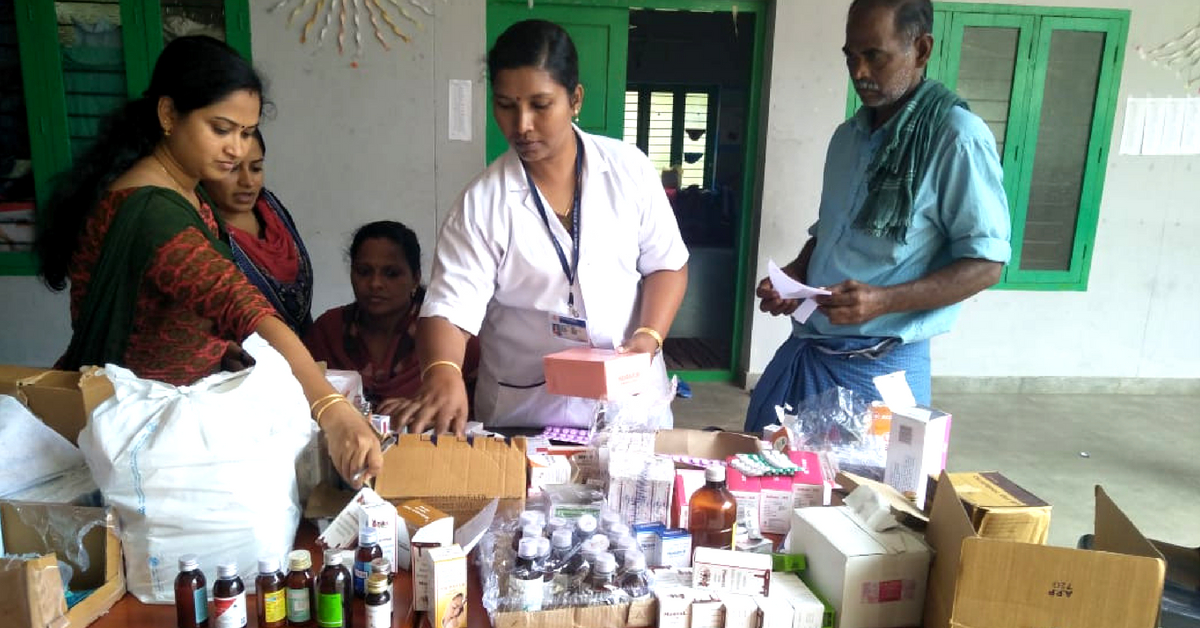
What was life like for the 8.69 lakh people in Kerala who were temporarily shifted to relief camps after the floods ravaged the state? Leaving your homes to the mercy of floodwaters while moving, albeit temporarily, to a relief camp was undoubtedly an emotionally challenging phase for all the survivors. But how did district administrators and other authorities ensure all the people in their camps stay well-fed, comfortable and happy?
The Better India spoke to IAS officer Krishna Teja Mylavarapu, the sub-collector or Alappuzha district, about the relief camps in his area.
“After Operation Kuttanad, there were approximately 3 lakh people in about 700 camps. It was our responsibility to make them temporarily forget about their problems and to provide as many amenities as possible to make them relaxed. For this, two IAS officers and two ministers—District Collector Suhas, me, Mr Sudharakaran and Dr Thomas Isaac—worked together to make sure everything they need was available,” he said.
He further told us, “I chose schools and engineering colleges as camps because we don’t have specific buildings as relief camps. Then, in the schools, I requested all teachers and principals to be a part of the management. In Kerala, we have a strong Panchayati and municipality system. So everyone got involved in the task.”
With a management task force in place, the job of the district authorities became much easier than what they had started out with.
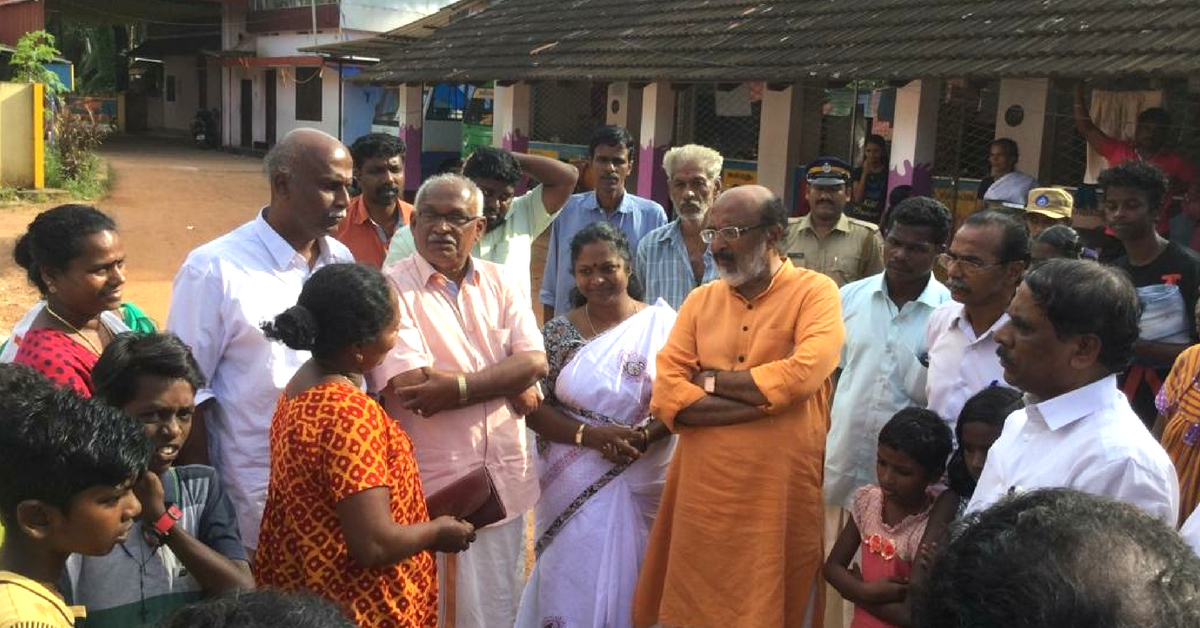
For the Alappuzha authorities, especially, it was a mammoth task to have a system in place before the people started coming in. Over 2 lakh people were rescued within three days in the Kuttanad area of the district, and they were arriving at the relief camps consistently. You can read about the fascinating story of the historic rescue mission, Operation Kuttanad, here.
GiveIndia and The Better India have come together to help Rebuild Kerala by supporting 41,000 affected families. You too can be a part of this movement and help us raise funds for the NGOs working to rehabilitate these families. If all of us come together with a small monthly contribution, we can make a real and meaningful difference in helping restore normalcy to those who need our help the most.
Unable to view the above button? Click here
The camps were temporary shelters, but the situation made it all the more necessary to have a clockwork system in place. Management, planning and executing, while also addressing people’s grievances would not have been possible without an administrative system. So, Krishna Teja says, they formed one.
“Each room had a room leader—usually the class (turned into a dorm) teacher was their leader. So whoever was staying in the room, would take care of the people and give them whatever they needed. There was also a committee to manage the camps.
We had a representative of the people, a representative each from the police and revenue department who sat together and discussed the menu, materials and execute the plans,” he told TBI.
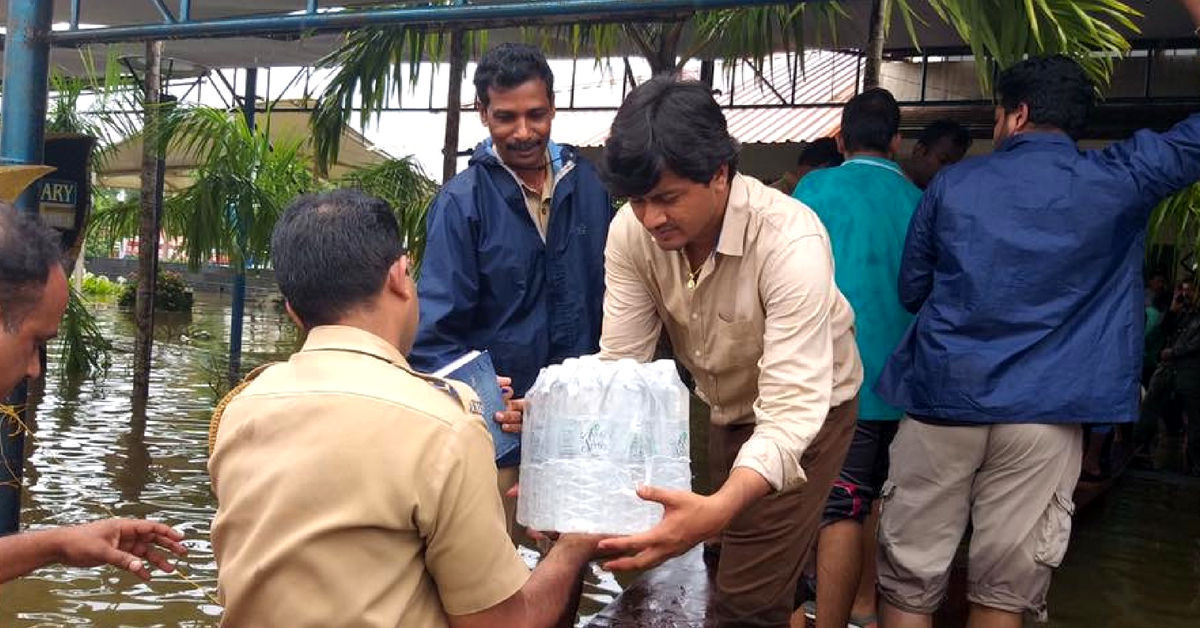
These relief camps were not going to be just a shelter for the thousands of people stranded there; they were going to be like their homes with amenities ranging from healthy food to sanitary napkin dispensers to entertainment programmes in the evening.
Elaborating on how the ministers ensured quality checks and won the trust of the people, Krishna Teja said, “I started eating in the camps. I started having all my meals there, and along with that, I ensured that every government official who was stationed at the camps ate with the people there. When government officials are eating in different areas of the camps, the quality of the food was substantially increased. We received no complaints about the quality of food.”
The unity of the people—flood victims and volunteers—was evident from the way the camps functioned.
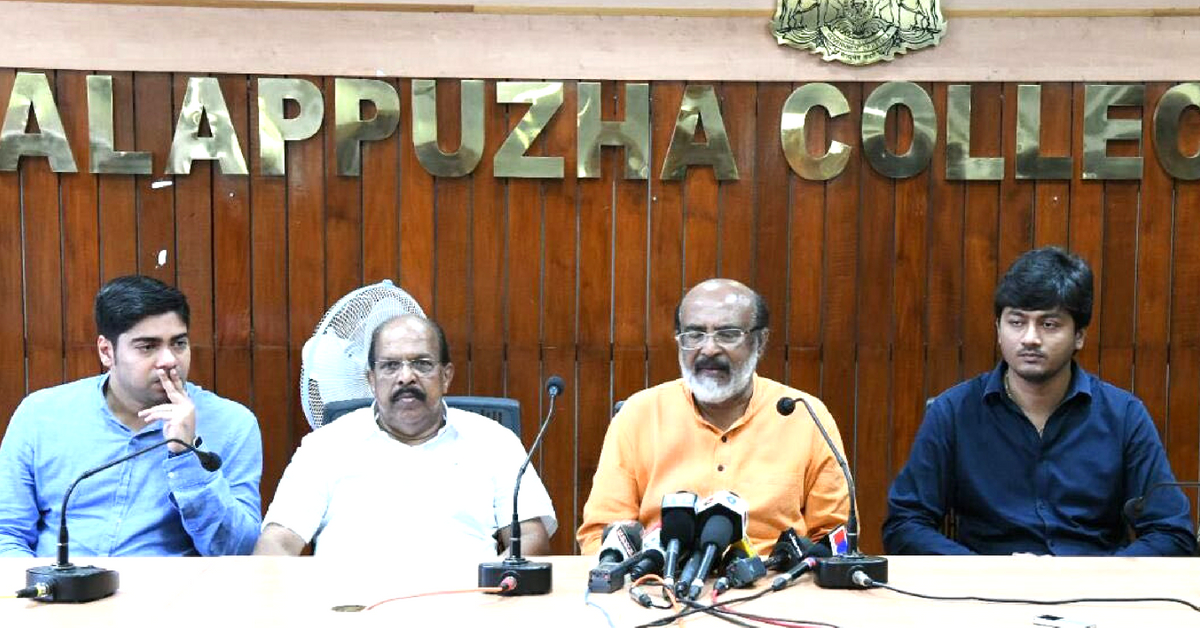
With good quality supplies, medical aid and responsive government officials working with them, people living in the camps were considerably happy. And the volunteers pitched in, not just in terms of their work, but also relief materials.
“In most of the camps, the amount of material we sent was very less because the students, alumni and teachers themselves brought material from home,” the IAS officer told TBI, adding that “They collected food, and cooked and distributed it. Now, in every camp, we initiated a programme called ‘Sing for Kerala.’ In the evening, we had a singing programme to entertain the people.”
Seemingly trivial initiatives like these were what kept the morale of the flood survivors up. Early in the mornings, the organisers conducted Yoga sessions, to energise the people.
Doctors on campus would ensure that even with the ravaging floods carrying the threat of several diseases, none from their relief camps suffered from any.

Whenever someone needed medicines, the doctors were in the right place at any given time.
“They shouldn’t sit idle. That would lower their morale, and they would have started thinking about their houses… So we were keeping them engaged,” Krishna Teja told TBI. Hygiene, healthy diet and cultural activities played an essential role in the camp management. One great example of this is the instalment of bio-toilets and sanitary napkin dispensers in the premises.
The need for both of these is self-explanatory but the fact that they were installed within hours is what makes an effort genuinely commendable. “We provided three meals—breakfast, lunch and dinner. We made sure that the bathrooms were cleaned every day and that they were properly maintained,” Krishna Teja informed TBI.
The government officials, the sub-collector says, also conducted awareness programmes, mainly about the dos and don’ts when the people finally go back home. Most might find their homes to be in absolute shambles, but even then, they need to be extra careful about electronic devices, wires they touch, pests and snakes in the nooks of their house, rotten food etc. The organisers ensured that the campers know well in advance the precautions they need to take when they return home.
You may also like: When Gandhiji Collected Rs 28 Lakhs for Kerala: Remembering the ‘Great Flood of 99’
While the humans were being taken care of at the camp, the animals were not left behind. While over 2 lakh people were rescued as part of Operation Kuttanad on the first day and a half, the rescuers returned to flooded areas with their boats, to save animals, livestock and station them at higher, safer areas. For the next week, volunteers visited these “relief camps” and fed the animals and ensured that they were healthy.
Since the news of “the worst floods in a century” had spread across the globe, these relief camps also invited UNICEF members for a survey.
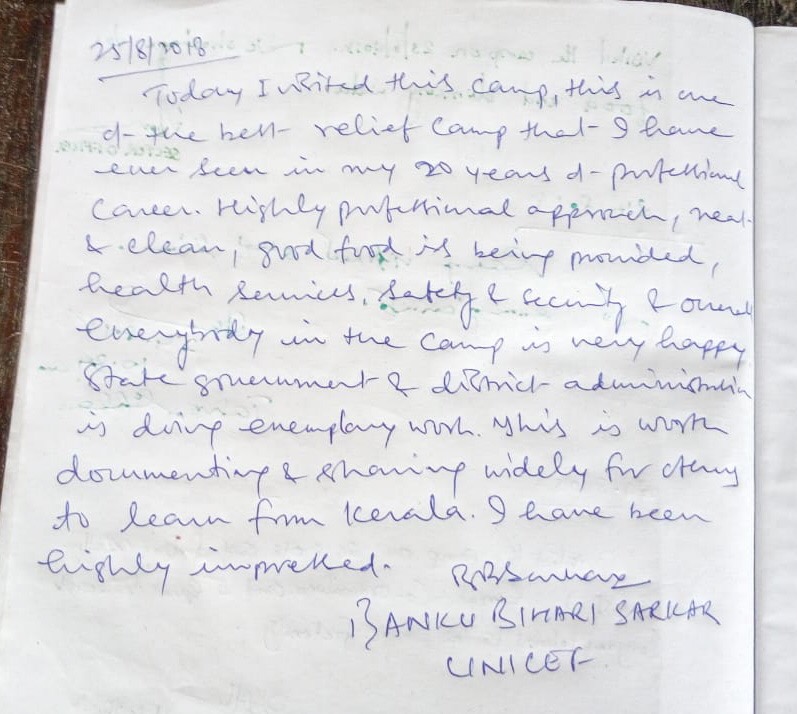
A team of three visited Alappuzha all the way from New York to check and evaluate crucial factors like hygiene and availability of food on the camps.
In a handwritten note to the administrators of these camps, Banku Bihari Sarkar, an emergency officer at UNICEF wrote, “Today I visited this camp, this is one of the best relief camps that I have ever seen in my 20 years of professional career. Highly professional approach, neat & clean, good food is being provided, health services, safety & security & overall everybody in the camp is very happy. State government and district administration is doing exemplary work. This is worth documenting and sharing widely for others to learn from Kerala. I have been highly impressed.”
GiveIndia and The Better India have come together to help Rebuild Kerala by supporting 41,000 affected families. You too can be a part of this movement and help us raise funds for the NGOs working to rehabilitate these families. If all of us come together with a small monthly contribution, we can make a real and meaningful difference in helping restore normalcy to those who need our help the most.
Unable to view the above button? Click here
(Edited by Gayatri Mishra)
Like this story? Or have something to share?
Write to us: [email protected]
Connect with us on Facebook and Twitter.
If you found our stories insightful, informative, or even just enjoyable, we invite you to consider making a voluntary payment to support the work we do at The Better India. Your contribution helps us continue producing quality content that educates, inspires, and drives positive change.
Choose one of the payment options below for your contribution-
By paying for the stories you value, you directly contribute to sustaining our efforts focused on making a difference in the world. Together, let’s ensure that impactful stories continue to be told and shared, enriching lives and communities alike.
Thank you for your support. Here are some frequently asked questions you might find helpful to know why you are contributing?


This story made me
-
97
-
121
-
89
-
167











